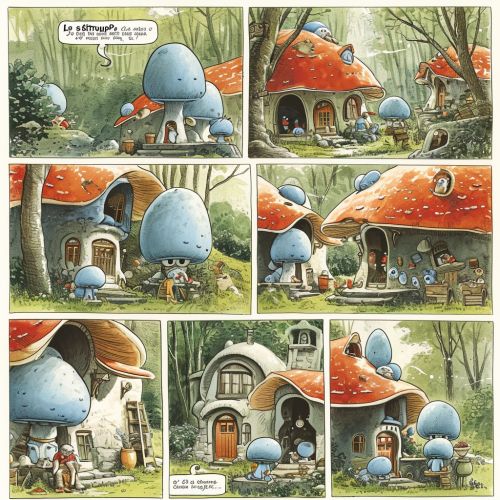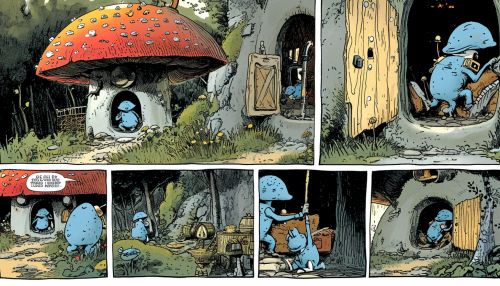The Smurfs (comics)
Origins and History
The Smurfs, originally known as "Les Schtroumpfs" in French, are a fictional group of small, blue, humanoid creatures that live in mushroom-shaped houses in the forest. The Smurfs were first created and introduced as a series of comic characters by the Belgian comics artist Peyo (the pen name of Pierre Culliford) in 1958, where they appeared in a comic strip in Spirou magazine. The Smurfs franchise began as a comic and expanded into advertising, films, TV series, ice capades, video games, theme parks, and dolls.


Concept and Creation
Peyo introduced the Smurfs in the Johan et Pirlouit series, a medieval page turned knight fantasy in Spirou magazine. The term "Schtroumpf", which would later be translated into English as "Smurf", is said to have been invented during a meal Peyo was having with his colleague and friend André Franquin in which, having momentarily forgotten the word "salt", Peyo asked him to pass the schtroumpf.
Characters
The Smurfs comic strip focuses on a fictional colony of small, blue, human-like creatures who live in mushroom-shaped houses in the forest. The Smurfs are led by 543-year-old Papa Smurf, who looks over his Smurf society consisting of Brainy Smurf, Smurfette, Hefty Smurf and many others. Each Smurf is assigned a specific characteristic or role in the community, which is often indicative of their name.
Publication History
The Smurfs' first independent comic album, Les Schtroumpfs noirs (The Black Smurfs), was released in 1963, and was quickly followed by many more. The success of the Smurfs comics led to the creation of the popular animated television show, "The Smurfs", by the American company Hanna-Barbera in the 1980s.
Cultural Impact
The Smurfs have become a cultural phenomenon, with their distinctive blue color and simple, yet expressive, character designs becoming instantly recognizable worldwide. They have been the subject of numerous adaptations, including a highly successful animated television series and several feature films. The Smurfs have also been merchandised in many forms, from toys and clothing to theme park attractions.
